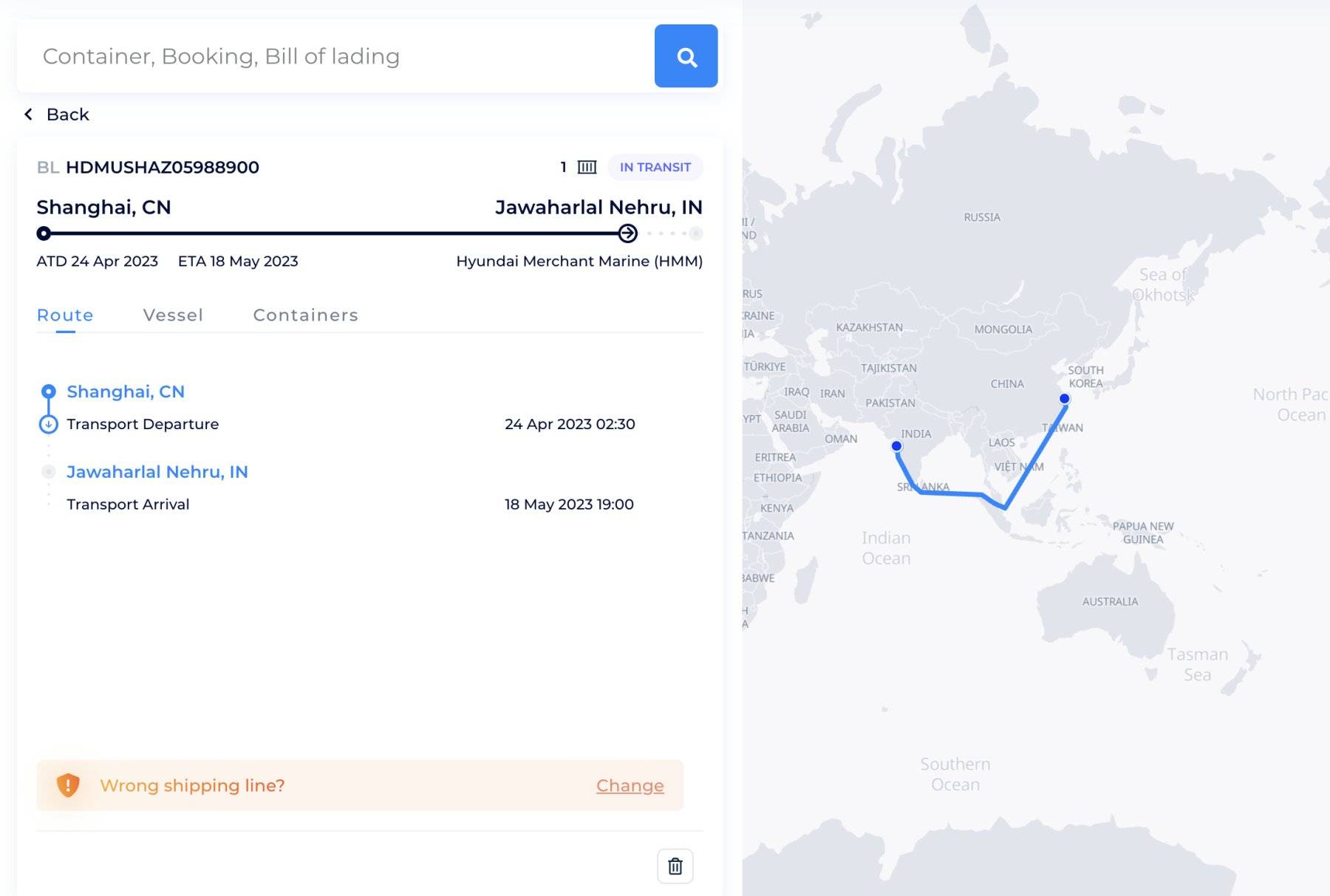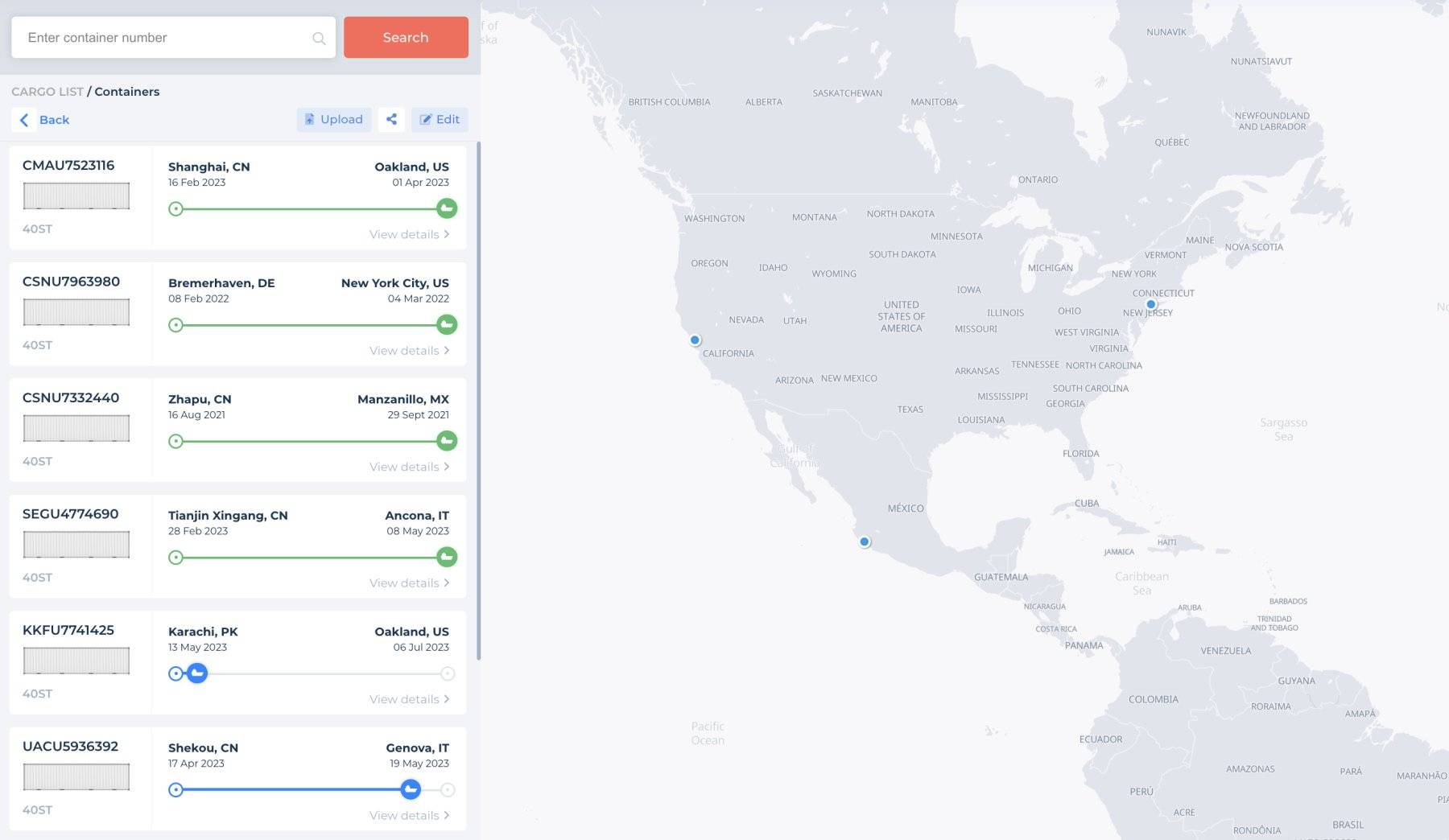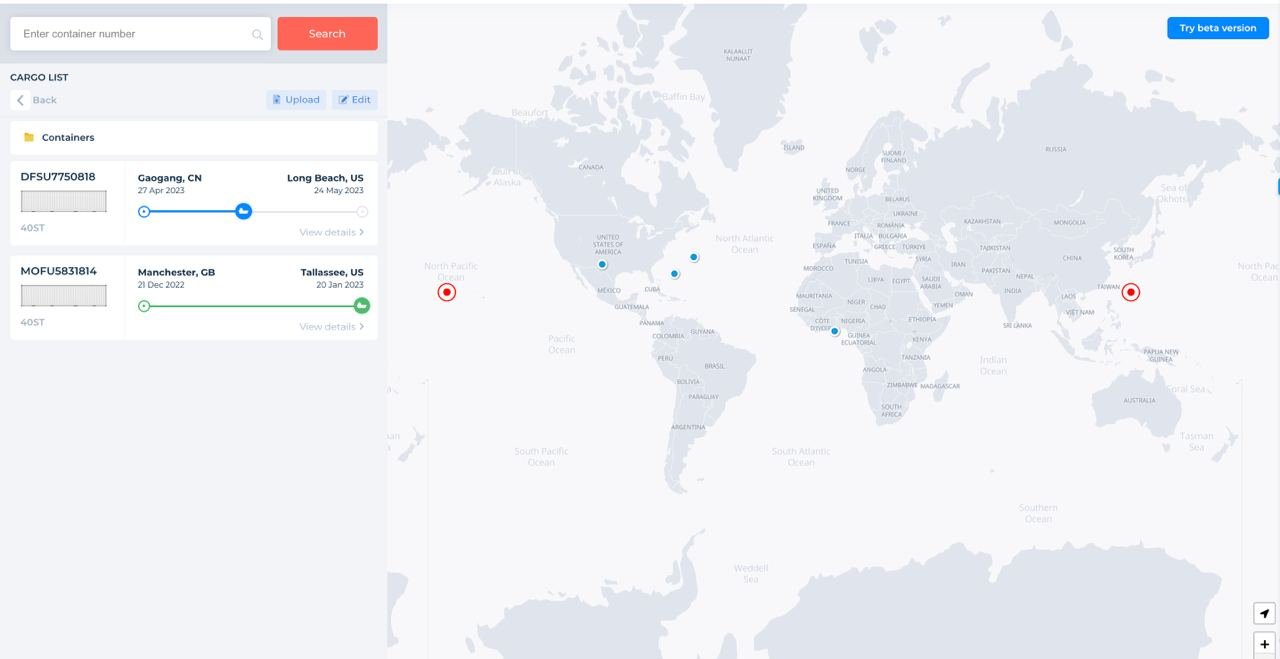To simplify your shipment processes, you need to work with and be familiar with logistics events – time indicators that save you resources. ETA, ETD, ATD, and ATA are commonly used terms in freight shipping that refer to the estimated time of arrival, estimated time of departure, actual time of departure, and actual time of arrival, respectively. Shipping companies, freight forwarders, and other parties involved in the shipping process use these terms to determine the timeline and progress of a shipment.
ETA meaning in shipping
ETA (Estimated time of arrival) is a crucial term in the shipping industry. ETA in shipping refers to the estimated time and date of cargo arrival at the destination port or terminal. The carrier or freight forwarder typically provides this crucial information, which is based on various factors including the vessel's current location, estimated speed, and other variables such as weather, port congestion, and customs clearance procedures.
Example:
If the vessel departs the port of Shanghai on May 1st and the estimated time of arrival (ETA) for the port of destination is May 15th, then the cargo is expected to arrive in Los Angeles on or around May 15th.
Impact:
ETA in shipping plays a significant role in the logistics and planning of both shippers and consignees. It enables them to anticipate the shipment's arrival and coordinate with other parties involved in the transportation process, such as customs brokers and freight forwarders. Any delays or changes to the ETA date can have a significant impact on the delivery timeline and may result in additional costs or complications.
The importance of Predictive ETA:
In addition to the traditional ETA, recent advances in technology have introduced predictive ETA, which uses real-time data and predictive analytics to provide a more accurate estimate of the shipment's arrival time.
Predictive ETA uses more data, taking into account factors such as weather conditions, traffic congestion, and port or terminal delays, among others, that affect the delivery of your shipment on time.
Example:
If the same vessel that departed from Shanghai on May 1 gets caught in a storm or the port is too full, the cargo will arrive in Los Angeles on May 20 instead of May 15. Based on this, the Predictive ETA data is updated, i.e., the predicted date of the vessel's arrival changes.
Impact:
With the help of Predictive ETA data, both shippers and consignees can plan their shipments more accurately. Using this data, they can avoid delays, and predict/optimize logistics operations.
ETA and Predictive ETA complement each other when planning logistics operations. The first is traditional and based on real facts. The second is needed for precise and situational planning based on the analysis of changes that have occurred.
Both indicators help to optimize logistics operations and minimize additional costs due to shipping delays.

ETD meaning in shipping
ETD (Estimated time of departure) is the expected date and time of the vessel's departure from the port of departure. The ETD in shipping is based on the scheduled departure time of the vessel and may depend on factors such as weather conditions, vessel availability, and port congestion.
Example:
If the vessel departs from Shanghai on May 1, you will be given an ETD indicator - May 1.
Impact:
ETD in shipping and logistics is important to shippers and consignees because it allows them to plan delivery and cooperate with other parties involved in transportation. Any delays or changes to the ETD date can affect delivery times and result in additional costs.
ATD meaning in shipping
ATD (Actual time of departure) is the actual date and time of the vessel's departure from the port. ATD is based on the actual time of departure and may depend on many factors, such as weather conditions, vessel availability, and port congestion.
Example:
The vessel would not leave the port in Shanghai on May 1, but due to bad weather, it is delayed and will depart on May 2. So, the ATD event is on May 2.
Impact:
ATD is essential to shippers and consignees because it ensures more accurate delivery times for goods. Any delays or changes to the ATD can influence delivery times and result in additional costs.
ATA meaning in shipping
ATA (Actual time of arrival) is the actual time and date of arrival of the shipment at the port or terminal of destination. ATA in shipping is based on the actual time of arrival and can depend on factors such as the vessel's current location, estimated speed, and other variables such as weather, port congestion, and customs clearance procedures.
Example:
If the shipment was due to arrive in Los Angeles on May 15, but the vessel did not arrive until May 20 due to port congestion, then the ATA for this shipment is May 20.
Impact:
The ATA event is important to shippers and consignees because it provides a more accurate timeline for receiving goods. Any delays or changes to ATA can affect delivery times and result in additional costs.

And now you don't have to browse through the websites of all shipping lines to get data for your shipments, because you get it in one place. Absolutely all logistics events and real-time tracking of your containers are available in the Tracking System tool. This is your opportunity to track transportation data from 160+ shipping lines in one place.
Simply enter the shipment number and select the search button to conveniently track your cargo. The system will quickly display all shipment-related information and the cargo's location in real time on the world map.
How does knowing ETA, ETD, ATD, & ATA improve your shipping process?
After clarifying the meaning of logistics events, it is worthwhile to figure out how they help facilitate the transportation process in practice.
Depending on your role in the logistics campaign, freight tracking data can help you:
Suppliers
Knowing such logistics events as ETA, ETD, ATD, & ATA, you can plan your delivery more efficiently.
If you know when your vessels are ready to ship or waiting at the destination port, you optimize your operations and costs by avoiding additional storage and delivery fees.
The example of SeaRates shipping logistics tools shows how convenient it is for you to receive real-time data on the location and status of transportation.
Freight forwarders
These four events are important for you when delivering goods to determine the most optimal transportation route and minimize delays. Knowing exactly when the shipment will arrive, you can plan your further dealings with it. This way, the path from supplier to buyer becomes more cost-effective and streamlined.
Consignees
Tracking and receiving your cargo becomes easier when you know the exact day and time of arrival of the vessel with your goods. This way, you optimize your delivery planning, because you know how much time you need to calculate for preparing equipment for receiving the cargo. This way, you can predict delays and avoid unnecessary fees.
And you’re provided with advanced tracking as well. The visualization of shipping data and logistics events you have in the Tracking System will streamline and optimize your cargo transportation.

Port operators
For the convenience of all participants in the logistics campaign, port operators use ETA, ETD, ATD, & ATA events to optimize and control transportation operations. These indicators form the basis for fast cargo turnover in ports, which minimizes delays during the departure and arrival of vessels.
Customs brokers
ETA, ETD, ATD, & ATA are used to streamline all logistics operations. Including the timing of customs procedures.
Timely and accurate customs clearance is possible when logistics events are taken into account. Knowing these indicators, you can determine whether the vessel is ready for customs clearance or when to wait for it; thus, a customs broker can prepare the necessary documentation in time and organize the customs clearance.
Final thoughts
These terms are essential in logistics as they facilitate effective communication, planning, and coordination among all parties involved in the shipping process. Accurate and timely information regarding ETA, ETD, ATD, and ATA helps stakeholders optimize their operations, minimize disruptions, and enhance overall supply chain efficiency.
And you can get free support for tracking your cargo when booking your future shipments on SeaRates.
Please contact us at [email protected] for assistance with your tracking needs.

